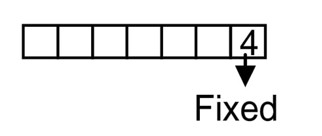7. One die of red colour, one of white colour and one of blue colour are placed in a bag. One die is selected at random and rolled, its colour and the number on its uppermost face is noted. Describe the sample space.
7. One die of red colour, one of white colour and one of blue colour are placed in a bag. One die is selected at random and rolled, its colour and the number on its uppermost face is noted. Describe the sample space.
-
1 Answer
-
7. One rolling a dice we have the possible outcome 1, 2, 3, 4, 5 and 6. Let us denote R, W and B as red, white and blue respectively. So, the desired sample space is
S = { (R, 1), (R, 2), (R, 3), (R, 4), (R, 5), (R, 6), (W, 1), (W, 2), (W, 3), (W, 4), (W, 5), (W, 6), (B, 1), (B, 2), (B, 3), (B, 4), (B, 5), (B, 6)}
Similar Questions for you
3, 4, 5, 5
In remaining six places you have to arrange
3, 4, 5,5
So no. of ways
Total no. of seven digits nos. =
Hence Req. prob.

f (x) = x? – 4x + 1 = 0
f' (x) = 4x³ – 4
= 4 (x–1) (x²+1+x)
=> Two solution
Let z be equal to (x + iy)
(x + iy) + (x – iy) = (x + iy)2 (i + 1)
Equating the real & in eg part.
(i) & (ii)
4xy = -2x Þ x = 0 or y =
(for x = 0, y = 0)
For y =
x2
x =
=
of
=
When
gives c = 1
So
sum of all solutions =
Hence k = 42
Each element of ordered pair (i, j) is either present in A or in B.
So, A + B = Sum of all elements of all ordered pairs {i, j} for and
= 20 (1 + 2 + 3 + … + 10) = 1100
Taking an Exam? Selecting a College?
Get authentic answers from experts, students and alumni that you won't find anywhere else
Sign Up on ShikshaOn Shiksha, get access to
- 65k Colleges
- 1.2k Exams
- 679k Reviews
- 1800k Answers
